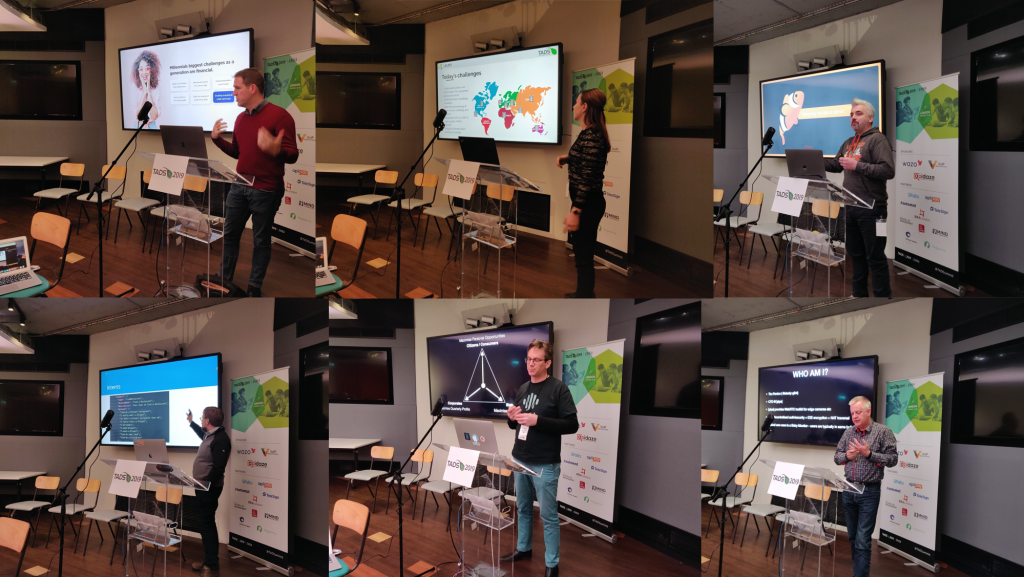The afternoon of Day Two TADSummit EMEA was one long intense session focused on innovation, and a closing keynote from Simon Woodhead of Simwood focused on privacy.
I kicked off the afternoon with “By The Numbers: CPaaS, UCaaS, CCaaS Landscapes and Market Sizing.”
We’re entering a new phase in the democratization of telecoms. Communications is now programmable, its revolutionizing the $2.2T telecoms industry. Enterprises large and small, governments, local businesses, hospitals, dentists, web companies, garden centers are all using communications in new ways to improve their operations and customers’ experiences. There are hundreds of companies around the world that are helping businesses use programmable telecoms.
The aim of this session is to provide an open, independent, and industry-wide review of the impact of programmable telecoms on business. We will cover CPaaS (Communications Platform as a Service), UCaaS (Unified Communications Platform as a Service, AKA virtual or cloud PBX), CCaaS (Contact Center as a Service), open source telecom software, authentication and customer experience, omni-channel customer communications, WebRTC (Web Real Time Communications) and much more reviewing the landscape and market sizes.
Will machines ever converse authentically? by Rob Pickering, Founder and CEO Aplisay.
Can machine learning ever help virtual agents properly understand what we mean, or are chatbots just an overhyped party trick which provides a steady stream of “epic fail” stories.
There is a strong consensus that conversational interfaces are the future of machine interaction. This vision says that being able to converse naturally using linguistic skills that humans have developed of millions of years of evolution will render clunky data input oriented interfaces we once had to learn obsolete overnight.
Whilst there are multiple challenges in delivering delightful, or even just useable, conversations across diverse media paths, the core problem is one of machines understanding our speech and the thought processes that drive it. Recognizing what we want through what we say by following the twists and turns of a conversation is not trivial.
In this session, we will look at both the currently available approaches for developing conversational interfaces and also likely future direction for the technologies involved. It will examine what can be achieved with rigid state machines and decision trees versus pure machine learning approaches and deliver practical advice on how to bootstrap a chatbot initiative using the technology of today whilst capturing and preserving data that you will need to make it better tomorrow.
Le Voice Lab by Karel Bourgois, Voice Chapter Pilot, Hub FranceIA.
Raising French global competitiveness in programmable voice. A group of 20 companies and 10 labs in France working on Voice. Working together to create a marketplace to compete with the privacy-invading internet giants with our own platform. Yes, its David against several Goliaths. But we have to try.
Audience Question: Should the UK do the same?
ambien
<slides coming soon>
Some (Surprising) Discoveries in Applying the as-a-service model in Running a Mobile Core Network, by Werner Eriksen, CTO Working Group Two (WG2).
WG2 has now been running a live mobile core network as a service for some time, and we have learned some interesting and sometimes surprising things that we would like to share.
Edge IoT and 5G – can WebRTC help? by Tim Panton is CTO at |pipe|.
We face a puzzle:
- More and more IoT devices are putting AI the on device.
- Latency is critical to many applications (think warehouses, farms etc)
- The user with their BYOD smartphone is often geographically very close
- Devices need to collaborate locally (collision avoidance etc)
BUT the 5G model has all the traffic traversing the telco core – even when it could have remained in the same cell, adding costs and latency.
WebRTC’s TURN/ICE protocols potentially offer a way to keep local traffic local, without minimal changes to the network/endpoints.
We’ll describe how the pieces might fit together.
Having both Werner and Tim present next to each other grave a great opportunity for a following discussion about the viability of Tim’s idea.
Updraft by Matt Millar, serial entrepreneur, Founder Updraft (solving expensive consumer debt). Matt also share insights into how he builds and architectures the service. Highlighting the role serverless and continuous deployment plays for many new services today. And it was also where Matt used the term ‘Yak Shaving’ for building your own infrastructure 🙂
stromectol
<slides coming soon>
Cloud Control Access: From Hack to Reality by Laura Chirca – NEURER BUSINESS SOLUTIONS.
We’ve seen several IoT based door access control hacks over the years at TADHack. NEURER is making this a commercial reality for its customers in Romania and beyond. It’s a great example of the migration from hack to business, and the power of the democratization in telecoms enabling people to create solutions for their customers that fit their specific local needs.
The Cloud Control Access System opens doors with cards, codes, phones, and SMS. The prototype starts with physical door controllers (the first release is Arduino-based), then migrates to intermediate building proxies that hold the customers’ database in case the internet goes down (a reality most businesses face several times a year) and them migrating to a scalable cloud authentication and portal layer.
After my conversations at Astricon, and many channels in the US deploying such solutions. I think the timing of this solution is very good for Europe.
Closing Keynote: Securing my Space Genitalia by Simon Woodhead, CEO at Simwood Group PLC.
Simon will explain how you have no privacy and how, hypothetically of course, he could use that to identify and track you in the name of security. He’ll also rant about why the cloud must die and how the coming edge compute revolution should be rejoiced by makers and open source developers everywhere. Strap on!
A highly entertaining and insightful presentation, I couldn’t agree more. A great way to wrap-up 2 long intense days focused on programmable telecoms innovation.

